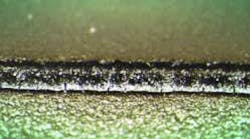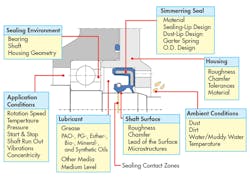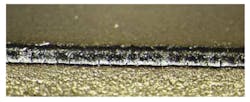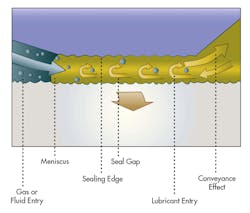Radial shaft seals (RSSs) are the classic sealing solution when it comes to rotating shafts. To ensure leak-free performance over the lifetime of a RSS, high quality is not the only must. There are other influencing factors that need to be taken into consideration when designing and choosing the perfect seal for your application.
The original RSS was invented and developed in 1929 by Freudenberg’s Walther Simmer as the Simmerring Oil Seal. Whether they are called RSS, oil seals, or Simmerrings, they’re all sealing elements in a tribological system that is subject to complex interactions between:
- Sealing compound or sealing lip
- Surface of the rotating shaft
- Medium to be sealed
- The environment bearing the impact of the operating load
Many influencing factors have an impact on the sealing behavior and the operating life of RSS, and they must be taken into consideration in the configuration of the overall seal area.
Factors contributing to radial shaft seal lifespan.
At the same time, it is not merely individual operating parameters that make an application seem extreme from the standpoint of a RSS. It is often the combination of requirements that represent a special challenge for reliability from a sealing point. To achieve the operating life requirement, the demands for additional functions (e.g., mounting, installation space) or a combination of influencing factors must be accounted for.
In the following, the influencing factors of temperature, lubricant, and pressure are considered in detail.
1. Influence of Temperature
The operating conditions, including circumferential speed, temperature, pressure, and lubricant as well as internal and external contamination are determinative for the lifespan of an RSS. An excessive temperature increase can result in unfavorable changes in the mechanical characteristics of the sealing material. It can also lead to the hardening of the seal lip or to cracking in the seal lip contact zone and can result in the seal’s premature malfunction.
High temperature increases can accelerate the oxidation rate of the medium to be sealed or activate its additives to develop undesirable reactions to the material in the seal/shaft contact zones. Even with the use of chemically resistant sealing materials, the sealing mechanism can be disrupted by the byproducts of oil additive reactions or from coked oil deposits in the contact area of the sealing lip. The temperatures that act on the RSS are the result of environmental influences and the frictional heat caused by the seal lip itself. This leads to a considerable increase in the seal gap temperature compared to the oil bath temperature–the so-called overtemperature. For this reason, RSS materials are always selected for their appropriate temperature, oil resistance, and capacity to achieve the best possible specific sealing behavior with the least possible contact pressure. Friction-optimized seal lip geometry leads to the reduction of frictional heat generation, and to a decrease in the overtemperature in the seal lip contact zone, which has a direct impact on operating life.
2. The Influence of the Lubricant
The seal mechanism of an RSS largely depends on the elastic characteristics of the sealing material. When combined with an appropriate profile design, the RSS is capable of keeping fluids in the seal gap and pumping them back into the space to be sealed.
Pumping function of the radial shaft seal.
While the geometry of the seal is largely unchanged during operation, the lubricant and the seal material continually interact with one another. Both the lubricant and the seal edge are exposed to extreme mechanical and thermal conditions during operation. Aside from the enormous shearing of the thin lubricating film (<1μm) and the entry of oxygen, the temperature under the seal edge is the crucial variable affecting seal function. Measurements have shown that the seal edge temperature can be 50°C greater than the oil sump temperature depending on the operating conditions. Typical deficiencies resulting from excessive temperatures at the seal edge include oil carbon buildup and deposits on the seal edge as well as cracking and blistering.
Influence of Pressure
If the fluid to be sealed is pressurized, there is a direct impact on the seal lip. To minimize pressure-related deformation and stresses, an RSS will incorporate a shortened sealing lip that will reduce the contact pressure but will also reduce full flexibility. Still, an increased overpressure must be expected at the sealing lip, which limits the application with regard to rotational speed and circumferential velocity. Aside from increased overtemperature, locally deficient lubrication must be expected on the air side area of the sealing lip contact zone and leads to concave wear in the area and the seal’s premature malfunction.
In light of these pressure-induced factors, certain RSSs are equipped with a special geometry at the seal edge. These RSSs are manufactured utilizing special patented air-side geometry that optimizes lubrication in the contact zone, minimizes the contact area, and decreases overtemperature condition and reduces wear. This design of the RSS can be used to expand these products’ area of application with regard to pressure and circumferential speed and can lead to a clear increase in operating life. Some companies such as Freudenberg-NOK Sealing Technologies offer special pressure profiles in their portfolio that withstand these influencing factors.
The sealing behavior of a RSS depends on numerous influencing factors. For this reason, attention cannot be selectively paid to just one variable. Rather, the overall tribological system must be analyzed. Temperature, lubricant and system pressure are three key influencing variables that have a strong impact on an RSS’s operating life.




